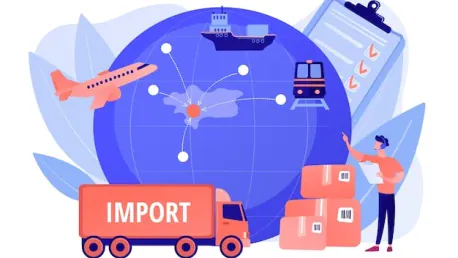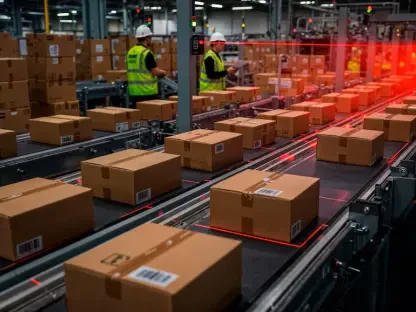The recent decision by the U.S. government to end the de minimis tariff exemption for Chinese imports has caused significant ripples across the global trade and e-commerce landscapes. Announced under the directive of President Trump, this policy change aims to address trade imbalances and curb deceptive practices. The de minimis treatment previously allowed low-value goods, under $800, to enter the U.S. without paying tariffs. With its termination, numerous industries—particularly those reliant on e-commerce—must swiftly adapt to the new regulatory environment. Here’s a roundup of industry insights, strategic responses, and expert opinions on navigating this substantial shift:
The Executive Order on De Minimis Policy Change
The termination of the de minimis exemption on goods valued at $800 or less originating from China, effective earlier this year, reflects the administration’s push to rectify trade practices. This executive order, “Regulating Imports with a Reciprocal Tariff to Rectify Trade Practices that Contribute to Large and Persistent Annual United States Goods Trade Deficits,” ends a policy that streamlined import processes for low-value goods. The rationale behind this change includes enhancing trade fairness and efficiency while reducing deceptive shipment practices that have been associated with the surge in low-value imports.
Industry Reactions and Strategic Shifts
E-Commerce Sector Impact
E-commerce platforms such as Shein and Temu, which heavily depended on sending low-value goods directly to U.S. consumers, face immediate challenges. Analysts from leading consulting firms emphasize that the removal of the exemption may lead to increased costs and adjusted business strategies. Many e-commerce businesses are being forced to rethink their sourcing and pricing structures. This adjustment is crucial for maintaining market competitiveness in this evolving landscape.
Logistics and Operational Adjustments
Carriers like FedEx and UPS, which experienced a surge in small-package imports due to the de minimis exemption, now need to navigate increased customs scrutiny and duties. Industry leaders highlight operational challenges such as slower delivery times, increased processing costs, and the need to implement new systems to manage these changes. These carriers are actively seeking ways to streamline their customs processing and minimize disruptions for their clients.
Manufacturing Relocation
To mitigate the impact of tariffs, many businesses are exploring alternative manufacturing locations. Notable shifts include moving production from China to regions like Mexico, Vietnam, and Malaysia. Experts from transport and logistics firms note that these relocations offer potential relief from the new tariffs. However, they also underline the complexity and costs associated with such transitions, suggesting that businesses must weigh these factors carefully.
Addressing Illicit Trade Concerns
Linking Trade Policy to Public Health
Significantly, the policy change ties into efforts to combat the synthetic opioid crisis by tracking and scrutinizing small parcels more closely. As highlighted by public health and trade officials, tightened measures aim to prevent illicit substances, including synthetic opioids, from entering the country through low-value shipments. This move is a critical part of broader efforts to ensure trade integrity and national security.
Customs and Border Protection (CBP) Efforts
CBP is enhancing its inspection and compliance capabilities to handle the increased volume of tariffed goods. Consultations with logistics experts suggest that the adaptation might involve upgrading systems for efficient duty collection. The collaboration between CBP and USPS to adjust international mail acceptance policies underscores the multifaceted approach needed to implement these new regulations smoothly.
Future Trajectories in Global Trade
Shifting Trade Routes and Markets
The industry is witnessing significant shifts in trade routes and manufacturing hubs, as businesses diversify their sourcing strategies. Innovations in logistics and increased scrutiny on low-value imports are prominent trends. Insights from trade experts indicate a gradual stabilization of the market as businesses adapt to new norms. Potential new hubs for low-cost manufacturing, such as countries in Southeast Asia, are becoming increasingly attractive to mitigate the effects of the tariff changes.
Rethinking Low-Value Trade
The overarching trade dynamics are prompting a reevaluation of low-value goods imports as businesses seek to balance efficiency and fairness. Experts suggest that diversifying supply chains and exploring new markets may offer sustainable solutions to the present challenges. The community is closely monitoring developments to anticipate the long-term ramifications on global commerce.
Conclusion: Navigating the New Trade Landscape
In summary, the end of the de minimis tariff exemption for Chinese imports has far-reaching implications for trade practices, e-commerce, and manufacturing strategies. The immediate impacts involve enhanced customs scrutiny, increased operational costs, and strategic relocations of production facilities. However, the business community’s proactive adaptation indicates a robust response to these changes.
Moving forward, companies need to prioritize compliance, streamline their logistics processes, and explore alternative manufacturing locations to mitigate tariff impacts. The policy shift signals a significant transformation in trade dynamics, emphasizing fairness, security, and economic integrity. As organizations navigate these changes, ongoing strategic reassessment and proactive adaptation will be crucial in maintaining competitive advantage and ensuring compliance in an ever-evolving trade environment.








